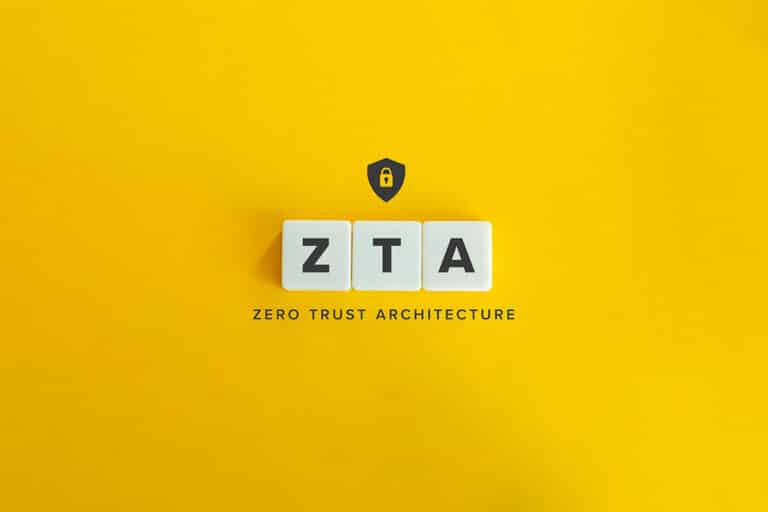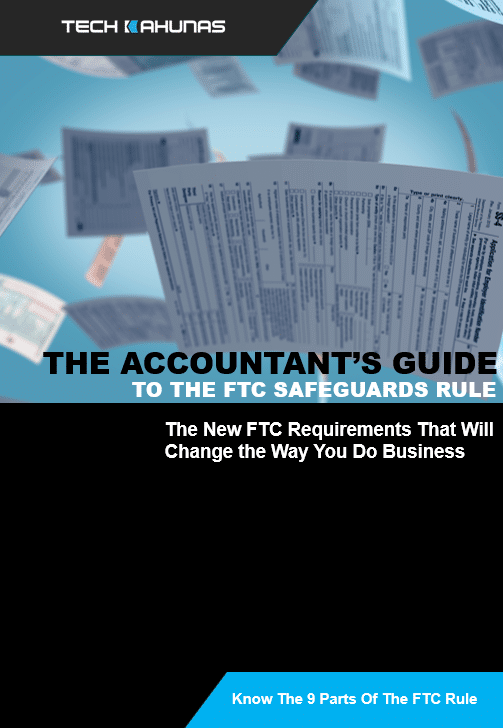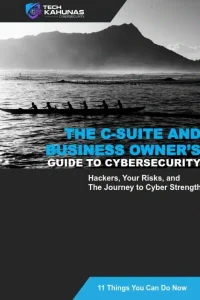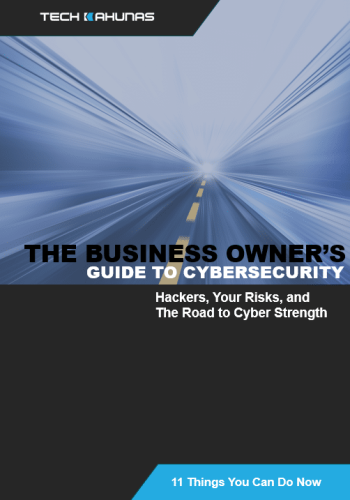It’s understandable with your daily business pressures that have evolved over the last few years that your company or organizations needs to embrace zero trust. The pandemic presented small businesses and organizations with new security considerations: remote workers with access to a much wider range of apps, new ways of working onsite, bring your own devices, cloud-based assets, and new supply chain and vendor processes.
You may have put together additions like these to your network ad hoc. Now you have an unwieldy patchwork of devices and computers at your business.
But the tweaks you put in place have also extended your network boundaries (or “perimeter”). In adding devices and computers as needed, you (and your administrators!) have added security vulnerabilities. You’ve lost track, and your problems are becoming more apparent every day. This new reality demands a new security paradigm.
What is Zero Trust?
In the traditional “castle-and-moat” approach your local area network requires permissions for users and computers to be verified once, who are then trusted by default, i.e., no more verification is needed. There is the old Russian proverb: “Trust, but verify.”
But if you use a zero trust security model, or zero trust architecture (also, “perimeterless security”), the proverb is intensified: your network must “never trust, always verify.” Zero trust requires continuous verification of user and system identities for each computer resource requested. The emphasis here is on resources rather than how your network is segmented (NIST). Zero trust security enforces strict access controls, continuous monitoring, and verification of every user, device, and application attempting to access your SMB’s resources.
While you previously may have trusted users and devices within your corporate perimeter or connected via a VPN, today’s complex corporate networks running under zero trust work without respect to your systems or user accounts or the location of any of these. (Zero trust can also be applied to the CIA—confidentiality, integrity, and availability—of your data while it is accessed or managed. This access should be authenticated dynamically.)
The core principles of zero trust security include:
1. Verify explicitly: Continuously validate and authenticate every user, device, and application attempting to access resources, regardless of their location or network.
2. Least privileged access: Limit user access privileges to only what is absolutely required for their job functions, minimizing the potential impact of a compromised account or device.
3. Assume breach: Operate under the assumption that the network has already been compromised and constantly monitor for anomalous behavior, rather than relying solely on preventive measures.
Wait A Minute… Users Have To Repeatedly Log In Now?
In spite of the new authentication requirements, under zero trust security the user is not significantly inconvenienced or aware of the security measures taking place in the background:
– If you use single sign-on (SSO), “an authentication scheme that allows a user to log in with a single ID to any of several related, yet independent, software systems” (Wikipedia), this convenience is unaffected under zero trust.
– Multi-factor authentication (MFA) is also transparent under zero trust; users can only be required to reauthenticate from an unfamiliar device or location.
– Continuous authentication techniques, such as behavioral analysis or device health checks, may infrequently be performed in the background without disturbing the user.
– Zero trust access control policies can grant access based on user identity, roles, and permissions, but is also usually transparent to the user.
– Trust decisions can be made in the background and if necessary, access can be restricted, generally without user involvement.
– The user’s session can also be continuously monitored without their input. Suspicious activity can result in blocked access or further user reauthentication.
For your organization, zero trust protects your data and systems by admitting only the right users and giving them only the right access to the right data for the right reason and for the right purpose. Zero trust can assign a risk score for every user or process recognized by their time of day, device, use of sensitive data, or level of authentication (including MFA). Risk-based vulnerability management can monitor for cybersecurity attacks, like transactional fraud.
Setting It Up
While the zero trust security model may seem daunting at first and you may not have a lot of money or time. But implementing zero trust for your small to medium size business requires a pragmatic and scaled-down approach. Here are some suggested steps:
- Conduct a risk assessment: Start by identifying your SMB’s critical assets, potential threats, and vulnerabilities to prioritize your security efforts and establish a baseline for continuous monitoring. Perform an asset inventory of all devices, servers, applications, and data on your network.
- Implement multi-factor authentication (MFA): MFA is a cornerstone of zero trust security, ensuring that users are properly authenticated before accessing sensitive resources, even if their credentials are compromised.
- Leverage cloud-based security solutions: Cloud-based security services, such as identity and access management (IAM), endpoint protection, and security information and event management (SIEM), can provide SMBs with robust zero trust capabilities without the need for extensive on-premises infrastructure. Use secure VPNs or Cloud Access Security Brokers (CASBs) for cloud applications to ensure that all users and devices are authenticated before granting access to resources.
- Adopt micro-segmentation and least privilege access: Segment your network and applications into smaller, isolated zones, and enforce least privilege access controls to minimize the potential impact of a breach and limit lateral movement within your SMB’s systems.
- Continuously monitor and adapt: Regularly review, monitor, and update your SMB’s security posture, policies, controls, user behavior, and threat landscape, and be prepared to adapt your security measures as needed to address emerging risks and vulnerabilities.
- Enforce access controls for applications and data. Use access control lists (ACLs) or role-based access control (RBAC) to restrict access to specific resources.
- Implement endpoint security measures, such as installing updates and patches, deploying anti-malware solutions, and configuring host-based firewalls.
- Set up basic logging and monitoring. Use cost-effective SIEM (Security Information and Event Management) solutions or open-source options.
- Train employees on best practices to reduce the risk of security incidents.
- Develop an incident response plan.
- Ensure that third-party vendors and contractors adhere to security best practices and align with your Zero Trust approach.
These steps are cost and time efficient.
Why Zero Trust for SMBs?
While the zero trust security model is gaining widespread adoption across industries and organizations of all sizes, it offers several compelling benefits for SMBs:
- Enhanced security posture: By implementing strict access controls, continuous monitoring, and verification, zero trust security can significantly reduce the risk of cyber attacks and data breaches, protecting your SMB’s valuable assets and sensitive information.
- Scalability and flexibility: Zero trust security is designed to accommodate the dynamic nature of modern business environments, including remote work, cloud computing, and BYOD policies, allowing your SMB to adapt and grow without compromising security.
- Regulatory compliance: Many regulatory frameworks and industry standards, such as GDPR and PCI DSS, emphasize the importance of implementing robust security measures, which aligns with the principles of zero trust security.
- Cost-effectiveness: Compared to traditional security solutions, zero trust security can be more cost-effective for SMBs by leveraging cloud-based services, open-source tools, and minimizing the need for complex on-premises infrastructure.
Who’s Implementing Zero Trust?
From 2021 to 2023, the number of zero trust implementations have more than doubled. As of 2023, 61% of organizations now say they have zero trust in place and another 35% say they plan to implement zero trust soon.
Cloud-first zero trust platforms have won the majority of the zero trust implementations because of the cost savings, speed, and scale they deliver over legacy systems. Demand for endpoint security visibility and control grew faster than the market, leading all zero-trust priorities in 2022.
Now that the Biden administration has issued an executive order mandating zero trust for all governmental entities, many organizations are following suit. According to Gartner, zero trust solutions will grow from $820 million in 2022 to $1.674 billion in 2025.
Education Still Needed
While zero trust aims to be transparent, your user education should still cover the importance of MFA or how to recognize phishing attempts.
Zero Trust and Cyber Insurance
Today, it’s unreasonable not to have cyber insurance. Zero trust can aid your organization by enforcing regulations and auditing compliance. This can help give you more affordable rates for cyber insurance by providing the insurer with more information about your cyber readiness and lowering your risk by getting ahead of where the vulnerabilities and potential attackers are.
Conclusion: You Need Help Configuring Zero Trust
To configure zero trust, your administrators need the proper tools for provisioning and de-provisioning user accounts, MFA, SSO, and authentication hardware like smart cards and dongles. Your admins must be alerted to account expiration, unused VPN accounts, the reuse of passwords, the location of remote workers, patch requirements, and which apps are installed on your remote and in-house systems. Integrating your legacy systems is part of this preparation.
Zero trust is designed to provide robust security without being intrusive or an inconvenience to the user, but your small-to-medium business (SMBs) is cost-driven. Tech Kahunas can assist with these measures. We offer well-documented and secure APIs and consumption-based or subscription pricing. You don’t have to spend a lot of money or encounter too much difficulty to implement zero trust. Tech Kahunas can help you implement zero trust comprehensively and cost-effectively.
We’ll help you enhance your security posture, maintain regulatory compliance, and foster a culture of cybersecurity awareness and resilience, ensuring the long-term success and prosperity of your business. Defend Your Island.



 Get your CPA firm aquainted with new FTC rules.
Get your CPA firm aquainted with new FTC rules. 




